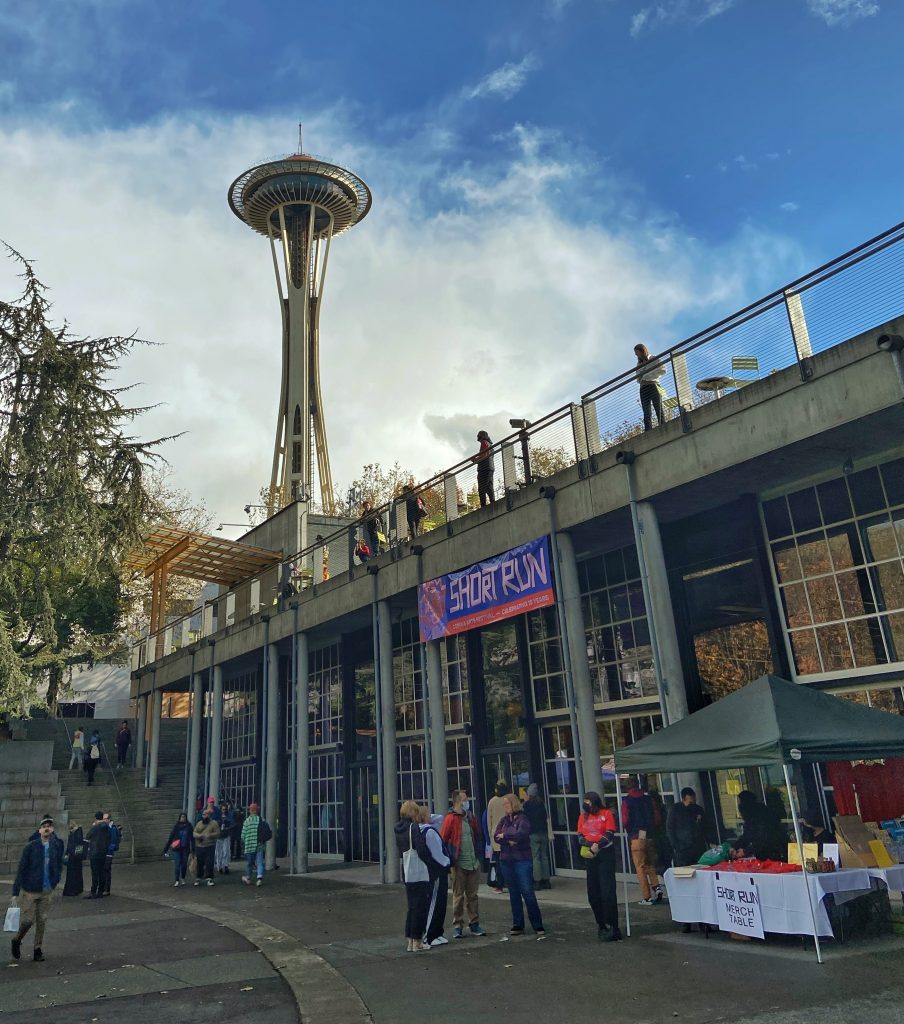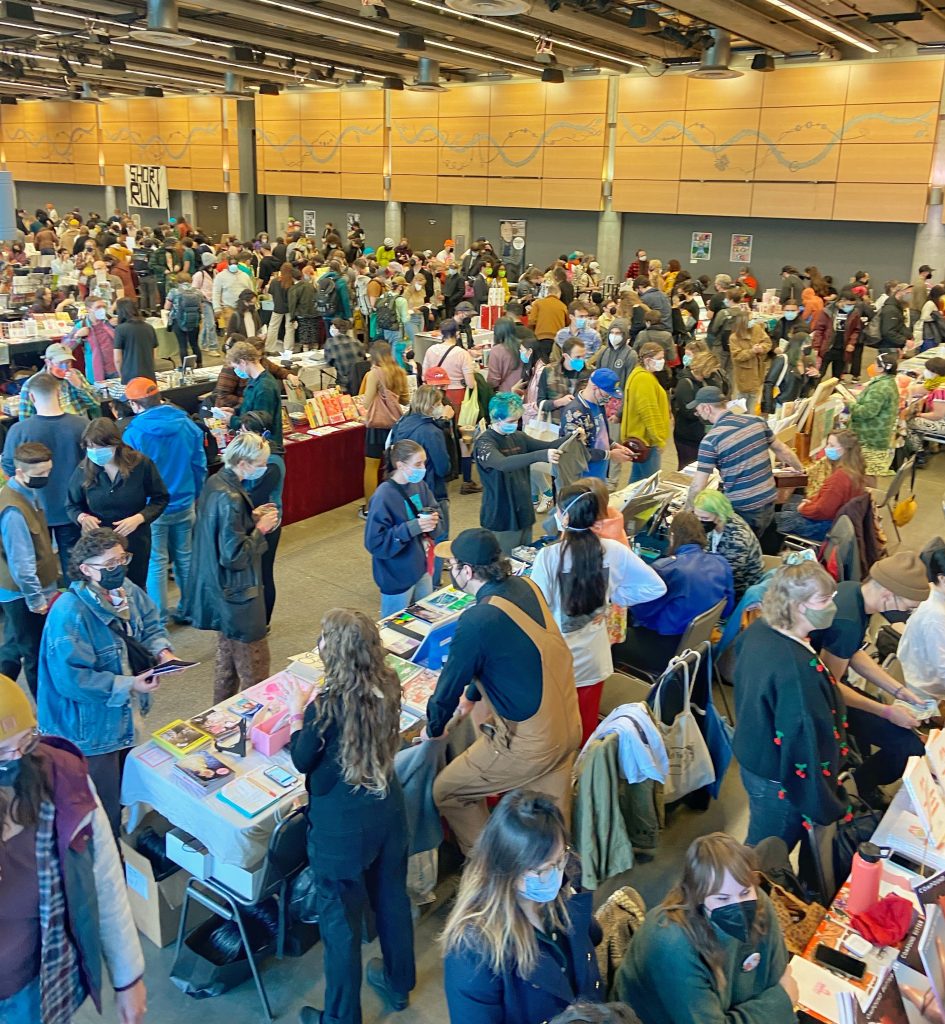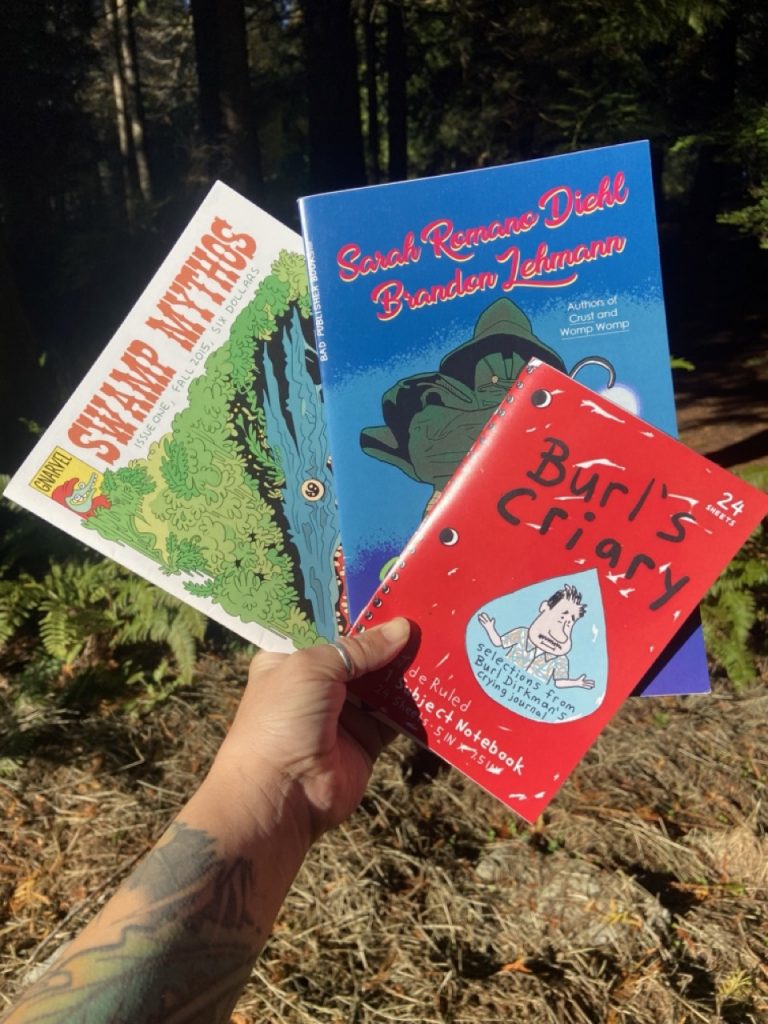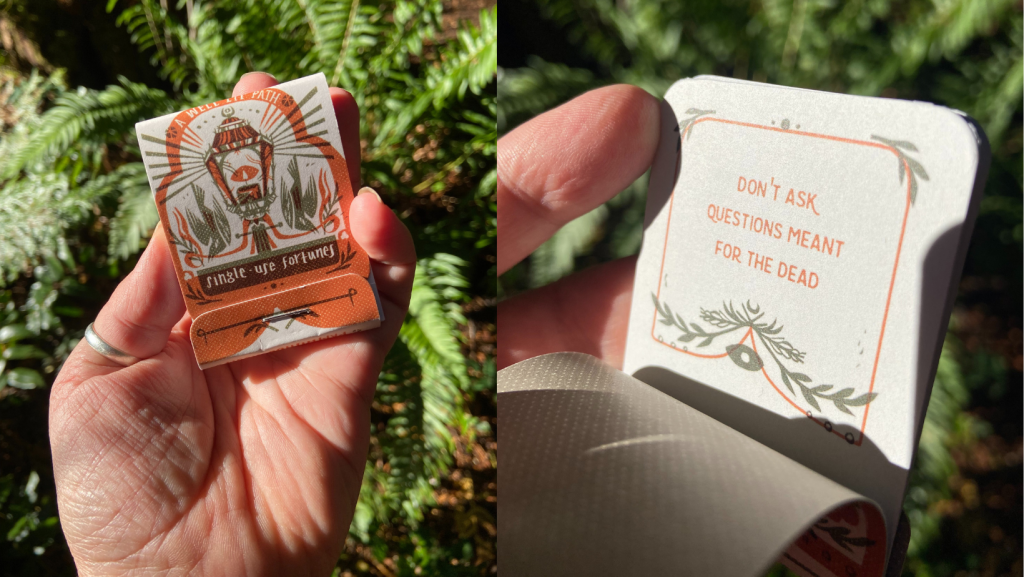
I’m going to preface this scene report by saying I am a literal hermit in the woods; I live at the base of a mountain and create comics for non-profit news organizations in an old shed. I spend a lot of time talking to my dogs, and whole weeks go by without me having a conversation with anyone except my boyfriend.
So, with that in mind, it’s no surprise that my primary experience at Short Run was being overwhelmed, though less in a crowded-subway-station way and more like an only-child’s-first-Christmas.

Short Run is a zine, print, and comics festival In Seattle, Washington. Now in its tenth year, the festival is astounding in its ability to bring together a wide variety of creators and throw them together in a way that feels cohesive and exciting. As you walk its packed rows, you’ll see publishers like Fantagraphics next to auto-bio comic creators like E Joy Mehr and small presses like Floating World chatting with editorial cartoonist (and professional Rad Dad) Brett Hamil. Each table brought a surprise, though not all tables were as surprising as the one containing ceramic floral dildos.
The best part of Short Run is that it’s free to attend. The comics and small press world is rarely as egalitarian and affordable as Short Run; table costs are reasonable, entry is free, and they made a solid effort to keep their space safe for immune-compromised attendees by requiring masks.
The festival takes place at Seattle Center, right next to the Space Needle. Though it’s most famous for family-friendly culture festivals and MoPOP (the Museum of Pop Culture), it’s also the home of indy darling KEXP and The Vera Project, an all-ages venue and community center. The location somehow sums up Seattle’s transformation over the past 20 years brilliantly; in a place that’s overrun by corporate greed, the things that make Seattle unique are being protected by mainstream arts and culture organizations in a way that would have felt strange in the 2000s when I lived there.
I took the monorail to the festival, which felt like the perfect metaphor for the artists who live here; it’s beautiful, quirky, and surprisingly efficient. The festival takes place at Fisher Pavilion, a small brutalist building in front of an ample green space perfect for taking a mask break, eating lunch, and pawing through your haul of comics.

I wandered the rows, gawking at Anders Nilsen being there in person, buying poetry from Two Plums Press and comics from James Stanton and Liz Yerby. My favorite of the haul was a tiny matchbook containing single-use fortunes from Seattle artist Pam Wishbow. I had a great chat with James Spooner about the new Non-Fiction Comics Fest in Vermont, though I didn’t manage to buy his book (or Simon Hanslemann’s latest, Below Ambition) and had to order them both when I got home. My commitment issues lead to continuous non-buyers remorse; maybe some of you can relate.

Short Run isn’t all selling things, either. Risograph printer Paper Press Punch brought their Zine Machine, two tables full of paper and art supplies, and a printer. By the end of the day, over 50 people of all ages made one-page zines and learned how to create something they could bring to the festival next year.
Essentially, Short Run is my comic festival utopian ideal; creators, publishers, artists, and readers can feel safe, supported, and surrounded by inspirational fuel for their next projects. They offer a few opportunities that are worth applying for throughout the year, including Trailer Blaze, a comics residency in a vintage trailer park in southern Washington, and a grant to produce a project specifically for Short Run.
Short Run will be back in 2023, though they haven’t announced dates yet. As soon as they do, I recommend getting it into your calendar; it’s a festival that works to build community and connection in a unique way.
SOLRAD is made possible by the generous donations of readers like you. Support our Patreon campaign, or make a tax-deductible donation to our publisher, Fieldmouse Press, today.

Leave a Reply